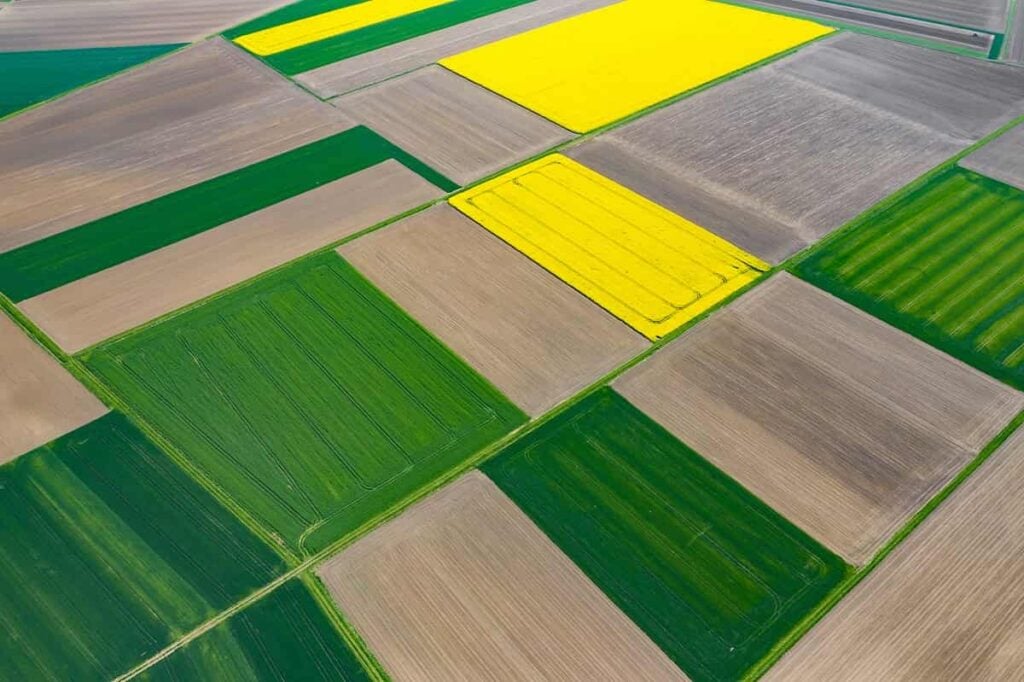The Best Urban Planning Software for Smart Cities
Table of contents

By 2050, 70% of the world’s population is expected to live in cities. This brings up some interesting questions around privacy in public spaces. What happens when, under the guise of public safety, we decide that everyone with a smartphone ought to have their movements monitored? In Russia, you might get away with identifying criminals using facial recognition on CCTV cameras, but here in ‘Murica people aren’t keen on this sort of thing. “They who can give up essential liberty to obtain a little temporary safety deserve neither liberty nor safety,” you’ll hear them say. What they might not be aware of, is that their movements have been monitored for some time now.
As long as you can assure a sufficient degree of anonymity, monitoring the movement of cell phones is perfectly legal. Anyone remember that cool case study we covered which showed how 2% of those who attended President Trump’s inauguration also donned their pink pussy hats and joined the Women’s March as well? Husbands appeasing their wives perhaps? It was an interesting exercise that showed how much we can learn by looking at geospatial data. Today, we want to talk about how urban designers can use geospatial data to build better urban environments.
Urban Planning and Geospatial Data
Urban designers often use geospatial data to develop truly smart cities. Also referred to as spatial data, geospatial data is information that can be conveyed on GIS software using geographic coordinates. Perhaps the coolest example of geospatial data startup is What3Words, a startup that carved up the world into 3-meter (3-yard) chunks of surface and assigned 3 words to each chunk. Suddenly, everyone on this planet has an address. It’s a geographic information system (GIS) that’s now become invaluable in helping all of the world’s population order packages from Amazon.
Here in the United States, all of the land is accounted for based on who owns it and what the land is zoned for. In fact, there’s a ton of information readily available that can be used to describe cities. One startup out there called UrbanFootprint decided to create the ultimate SimCity tool for spatial data visualization. It’s called “base canvas,” and it all starts by carving up the United States into distinct land parcels. Each parcel is then described using 70 data attributes like population, residential and employment characteristics, parcel area, building area, land use type, intersection density, and more.
About UrbanFootprint
Founded in 2014, Berkeley, California startup UrbanFootprint has taken in $18 million in funding to “design the sustainable cities of tomorrow with the first end-to-end urban planning software.” Their cloud-based “urban intelligence” software delivers insights to government, enterprise, and academic institutions in urban planning, finance, mobility, sustainability, policy making, healthcare, and disaster preparedness.
Founded by experienced urban design professionals, the software starts with parcel-level insights for nearly any populated U.S. location. With more than 120 million parcels, the company claims to have the most comprehensive, nationwide land-use database available. On top of that, you can apply thousands of ready-to-apply datasets in just minutes. The possible use cases for such a tool seem limitless, so we’ll provide some examples of how quickly you can answer complex questions relating to urban development.
UrbanFootprint Use Cases
We first came across UrbanFootprint in our article on 7 Smart City Urban Planning Ideas Using IoT where we described the company as a “SimCity for smart city urban planning and design.” That’s exactly how it feels when you begin seeing the tool in action. It awakens the inner nerd inside all of us. In order to demonstrate how the tool can be used effectively, let’s look at four use cases UrbanFootprint has provided (each comes with a complete blog post in case you’re interested in learning more).
Finding Opportunity Zones
The Tax Cuts and Jobs Act created ‘Opportunity Zones’ as a way to incentivize private sector investment in disadvantaged communities. City planners may be particularly interested in analyzing which parcels are most likely to draw redevelopment interest in an Opportunity Zone. One way to gauge the likelihood of redevelopment is by mapping the improvement to land value ratio from assessor’s data. In general, parcels with a low improvement value (the value of existing structures on the parcel) compared to the land value are more likely to redevelop. Below you can see where such a parcel has been identified.

By the way, there’s an interesting fintech company that lets retail investors invest in these “opportunity zones” and enjoy the accompanying tax benefits. If that interests you, check out our article on How to Get Into Commercial Real Estate Investing.
Finding Food Deserts
One cool feature the tool provides is the ability to create “buffers” around areas of interest such as hospitals or grocery stores. Then, you can easily see how many people live within the buffer zones to determine access to critical needs like healthcare and food. Using information from the US Department of Agriculture (USDA), UrbanFootprint was able to easily map the distance to food sources for low-income neighborhoods in cities across the nation. Below you can see the percentage of the population that is both low-income and lives over a 1/2 mile away from a grocery store (dark shades are bad):

Given America’s obesity problem, we could all stand to walk a bit further to the grocery store, but we digress.
Finding Transit-Poor Zones
While walking to the grocery store might be a good idea, walking to work isn’t something anyone should be expected to do. In the same way that we can create buffers around stores and hospitals, we can also create public transport buffers to identify which communities don’t have access to public transport. The below visualization shows how people on the outskirts of a city have poor transit access.

Think about how useful this tool might be for city planners who are trying to figure out where to open up an additional metro station.
Finding How Park Proximity Affects Pricing
We’ve talked before about how different variables affect property prices, but who knew something as obscure as “proximity to a park” could be observed in prices. That’s what one of their clients was wondering, so UrbanFootprint mapped single-family homes within 0.1 miles and 0.25 miles to parks in Seattle. They then joined the filtered parcels with the preloaded Parcel Reference Data layer to quickly compare the average property value increase for single-family homes that are closer to parks.

Incredibly, the average value for a single-family home within 1/10 of a mile from a park in Seattle is valued at over $32,000 more than a single-family home within a 1/4 mile of a park. Of course, this is the value that your average Seattle consumer ascribes to easy park access. Does every city value their parks equally? These are the sort of cool questions UrbanFootprint can help answer. And it’s not just for city planners.
Not Just for Urban Planning
By now you’re probably thinking about all the potential uses for this tool outside of urban planning. In their last funding round, UrbanFootprint talked about how “our product is evolving to support a burgeoning family of energy, mobility, and real estate customers.” If you’re a real estate developer, it’s hard to see how you could even function without such a tool. Utility companies like Pacific Gas & Electric are using the tool for planning and data analysis around heat wave, fire risk, and more. For any company involved in transportation infrastructure, knowing where everyone lives in proximity to your routes and how that population is expanding are critical parts of the planning process. As for pricing, they don’t disclose much in that respect, but it seems like they’re quite kind in making sure this gets into the hands of people that need it most.
Since any set of data that includes coordinates can be uploaded to UrbanFootprint’s tool and analyzed, this includes newly-emerging datasets like those being derived by the “c-word.” UrbanFootprint recently published a great article showing how their recently established COVID-19 Response Team can help agencies and organizations during today’s crisis. Some of the datasets that might prove useful include:
- U.S. hospital locations and beds
- Socio-demographic data from the US Census
- Poverty and vulnerability data from federal and state agencies
- Chronic disease and health promotion data & indicators
- Life expectancy estimates
- Food access data
- Schools, parks, transit, and other essential services point-of-interest data
Add in some movement data and you could very quickly observe how people are behaving in today’s locked down environment and whether or not that’s having an impact on flattening the curve. Whether or not you agree with the extent to which people ought to be monitored doesn’t matter here. We can probably all agree that tools like UrbanFootprint are invaluable to urban planners who are trying to improve the quality of life for those who will inhabit the smart urban areas of tomorrow.
Conclusion
In our recent piece on VR in Architecture, Engineering, and Construction, we talked about how using technology for the sake of it isn’t productive and often results in people quickly dismissing the idea. In the case of UrbanFootprint, it’s all about providing urban planning software services that can quickly answer the plethora of questions that urban planners across the nation are asking.
Since launching UrbanFootprint in April 2018, the company has helped over 500 customers map, measure, and analyze more than 4,000 planning projects in over 700 cities across the U.S. Over 20 top universities are using UrbanFootprint to teach the next generation of planners and urban practitioners. Making this tool freely available to academics in all urban planning programs will help accelerate adoption and make this an invaluable tool for developing smart cities going forward.
Sign up to our newsletter to get more of our great research delivered straight to your inbox!
Nanalyze Weekly includes useful insights written by our team of underpaid MBAs, research on new disruptive technology stocks flying under the radar, and summaries of our recent research. Always 100% free.
















hi
My Name is Vincent and the ceo and co-owner of VW Technologies Co Ltd and im looking for urban smart city planning software and the Government is working with me closely to undertake this project and i would like to view your demo and partner with you for upcoming if you are right fit and please do contact me asap.
Hey Vincent,
We’re just a research firm so you’d need to reach out to the companies directly.